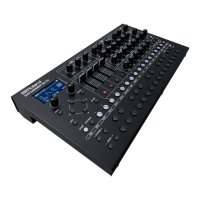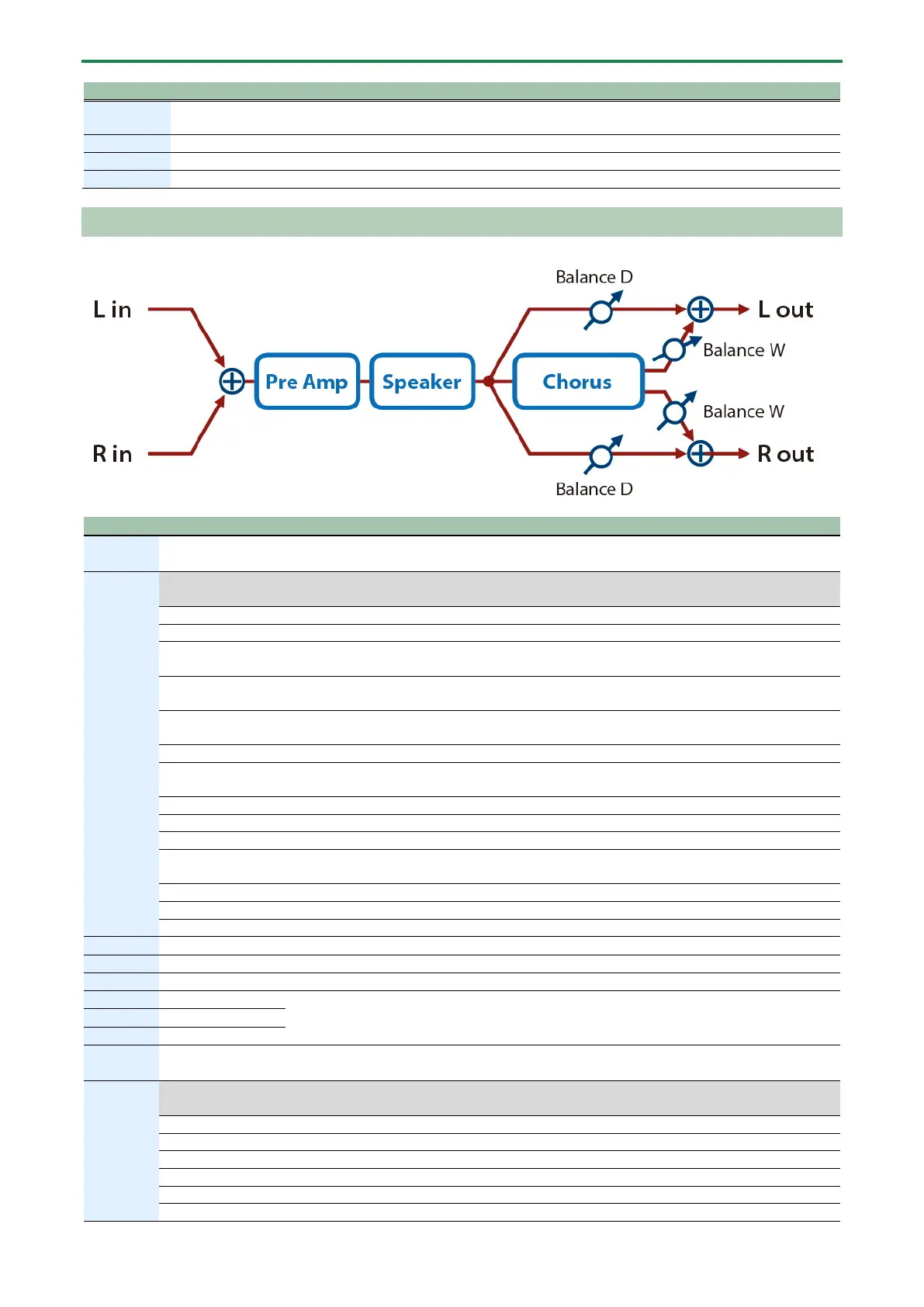MFX Parameters
153
AWah Bal
Adjusts the volume balance between the sound that is sent through the wah (W) and
the sound that is not sent through the wah (D).
Amount of boost/cut for the low-frequency range
Amount of boost/cut for the high-frequency range
Gt -> Chorus (Guitar Amp Simulator -> Chorus)
Turns the amp switch on/off.
ATyp
This models the sound of the Roland JC-120.
This models a Fender Twin Reverb.
MATCH DRIVE
This models the sound input to left input on a Matchless D/C-30.
A simulation of the latest tube amp widely used in styles from blues and rock.
BG LEAD
This models the lead sound of the MESA/ Boogie combo amp.
The sound of a tube amp typical of the late ’70s to ’80s.
MS1959I
This models the sound input to Input I on a Marshall 1959.
This is a trebly sound suited to hard rock.
This models the sound input to Input II on a Marshall 1959.
MS1959I+II
The sound of connecting inputs I and II of the guitar amp in parallel, creating a sound with a
stronger low end than I.
This models a Soldano SLO-100. This is the typical sound of the eighties.
This models the lead channel of a Peavey EVH 5150.
This is distortion sound that is ideal for performances of heavy riffs.
OD-1
This models the sound of the BOSS OD-1.
This produces sweet, mild distortion.
This is the high-gain overdrive sound of the BOSS OD-2.
This gives a basic, traditional distortion sound.
A fuzz sound with rich harmonic content.
Volume and amount of distortion of the amp
Volume of the entire pre-amp
Amount of pre-amp distortion
Tone of the bass/mid/treble frequency range
Selects whether the sound will be sent through the speaker simulation (ON) or not (OFF).
STyp
Diameter (in inches) and
number of the speaker
small open-back enclosure
small open-back enclosure

